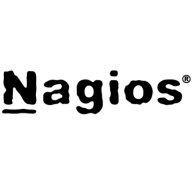

Nagios XI and Datadog are strong contenders in the monitoring tools category. Nagios XI offers an advantage in affordability and ease of setup for small to medium operations due to its free open-source core, while Datadog provides an extensive suite but at a higher cost, making it less accessible for smaller environments.
Features: Nagios XI offers robust capabilities including network service monitoring, customizable plugins, and real-time alerts. Users can extend functionality via community-contributed plugins and custom script support. Datadog provides comprehensive monitoring with features like metrics and logs collection, distributed tracing, and real user monitoring. It integrates well with multiple platforms, offering a seamless monitoring experience.
Room for Improvement: Nagios XI's licensing fees, particularly with technical support, can be costly. The interface, while functional, may require enhancements for larger deployments. On the other hand, Datadog users often highlight the potential for cost overruns due to its usage-based pricing model. Improved cost predictability and granular cost control features could enhance its offering.
Ease of Deployment and Customer Service: Nagios XI is known for its straightforward setup, especially for smaller operations with low infrastructure costs. Customer service, however, can be limited unless opting for premium support. Datadog offers more comprehensive customer support, including live trials and extensive documentation, which aids in deployment but can be complex for beginners.
Pricing and ROI: Nagios XI’s open-source core provides a cost-effective entry point but requires careful consideration of additional licensing for comprehensive support. Datadog's pricing is usage-based, which can be costly, demanding resource monitoring to avoid unexpected expenses. Despite a steep initial investment, Datadog's advanced features offer significant ROI potential, particularly for larger enterprises.
If the user interface isn’t presenting data well, it becomes difficult to manage when scaling.
It is very stable.
In future updates, I would like to see AI features included in Datadog for monitoring AI spend and usage to make the product more versatile and appealing for the customer.
The documentation is adequate, but team members coming into a project could benefit from more guided, interactive tutorials, ideally leveraging real-world data.
There should be a clearer view of the expenses.
Many tools have poor user interfaces, making them hard to manage and navigate.
The GUI could be improved. It's a bit too basic.
The setup cost for Datadog is more than $100.
We are using the free, open-source version.
The pricing for the Nagios XI product is good and better than other solutions.
Our architecture is written in several languages, and one area where Datadog particularly shines is in providing first-class support for a multitude of programming languages.
The technology itself is generally very useful.
Nagios XI simplifies our setup and reduces the time spent configuring monitoring tools.
The alerting system is very effective.
| Product | Market Share (%) |
|---|---|
| Datadog | 5.0% |
| Nagios XI | 3.5% |
| Other | 91.5% |


| Company Size | Count |
|---|---|
| Small Business | 78 |
| Midsize Enterprise | 42 |
| Large Enterprise | 82 |
| Company Size | Count |
|---|---|
| Small Business | 22 |
| Midsize Enterprise | 17 |
| Large Enterprise | 21 |
Datadog integrates extensive monitoring solutions with features like customizable dashboards and real-time alerting, supporting efficient system management. Its seamless integration capabilities with tools like AWS and Slack make it a critical part of cloud infrastructure monitoring.
Datadog offers centralized logging and monitoring, making troubleshooting fast and efficient. It facilitates performance tracking in cloud environments such as AWS and Azure, utilizing tools like EC2 and APM for service management. Custom metrics and alerts improve the ability to respond to issues swiftly, while real-time tools enhance system responsiveness. However, users express the need for improved query performance, a more intuitive UI, and increased integration capabilities. Concerns about the pricing model's complexity have led to calls for greater transparency and control, and additional advanced customization options are sought. Datadog's implementation requires attention to these aspects, with enhanced documentation and onboarding recommended to reduce the learning curve.
What are Datadog's Key Features?In industries like finance and technology, Datadog is implemented for its monitoring capabilities across cloud architectures. Its ability to aggregate logs and provide a unified view enhances reliability in environments demanding high performance. By leveraging real-time insights and integration with platforms like AWS and Azure, organizations in these sectors efficiently manage their cloud infrastructures, ensuring optimal performance and proactive issue resolution.
Nagios XI provides monitoring of all mission-critical infrastructure components, including applications, services, operating systems, network protocols, systems metrics, and network infrastructure. Third-party add-ons provide tools for monitoring virtually all in-house and external applications, services, and systems.
Nagios XI uses a powerful Core 4 monitoring engine that provides users with the highest levels of server monitoring performance. This high degree of performance enables nearly limitless scalability and monitoring powers.
With Nagios XI, stakeholders can check up on their infrastructure status using the role-based web interface. Sophisticated dashboards enable access to monitoring information and third-party data. Administrators can easily set up permissions so users can only access the infrastructure they are authorized to view.
Nagios XI Benefits and Features
Some of the benefits and top features of using Nagios XI include:
Reviews from Real Users
Nagios XI stands out among its competitors for a number of reasons. Several major ones are its integration options and monitoring abilities, as well as its alerting features.
David P., a senior DevOps engineer at EML Payments Ltd, writes, “We use Nagios as a network discovery tool. We use Nagios to maintain our uptime statistics and to monitor our services. It has allowed us to be much more sophisticated in our monitoring and alerting.”
An IT-OSS manager at a comms service provider notes, “Nagios XI has a custom API feature, and we can expose custom APIs for our integration. This is a great feature.”
We monitor all IT Infrastructure Monitoring reviews to prevent fraudulent reviews and keep review quality high. We do not post reviews by company employees or direct competitors. We validate each review for authenticity via cross-reference with LinkedIn, and personal follow-up with the reviewer when necessary.